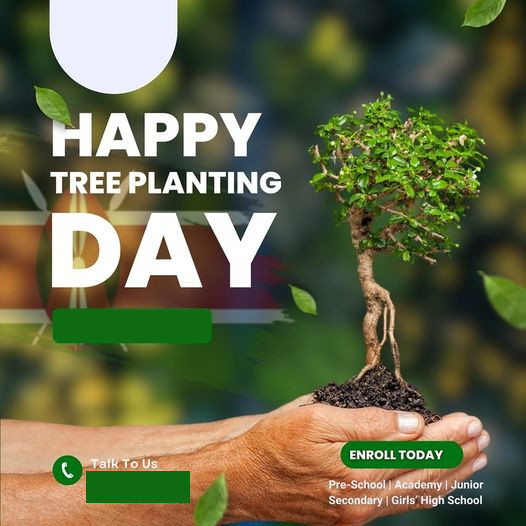Starting a tree planting initiative is one of the most impactful ways to contribute to environmental sustainability, combat climate change, and enhance local ecosystems. Whether you are an individual passionate about nature or part of an organization aiming to promote green spaces, tree planting offers an opportunity to make a lasting difference. This guide provides you with the essential steps and considerations for launching a successful tree planting initiative—from planning and organizing volunteers to selecting the right species and securing funding. With the right approach, your efforts can contribute to a greener future for generations to come.
Table of Contents:
- Why Tree Planting Matters
- Environmental and social benefits
- Global reforestation efforts and local impact
- Setting Your Vision and Goals
- Defining the scope of your initiative
- Short-term vs long-term goals
- Research and Planning
- Selecting suitable tree species for your region
- Understanding soil, climate, and biodiversity needs
- Legal considerations and permits
- Funding Your Initiative
- Applying for grants and sponsorships
- Community fundraising strategies
- Partnering with local businesses or NGOs
- Engaging Volunteers and the Community
- Recruiting and managing volunteers
- Organizing tree planting events
- Educational outreach and raising awareness
- Logistics and Tree Planting Techniques
- Preparing the land and planting guidelines
- Post-planting care and maintenance
- Monitoring and evaluating success
- Sustainability and Long-Term Impact
- Creating a maintenance plan
- Collaborating with local governments or organizations
- Ensuring community involvement for long-term care
- Conclusion: Growing a Greener Future
- Reflecting on your initiative’s impact
- Encouraging others to replicate and expand
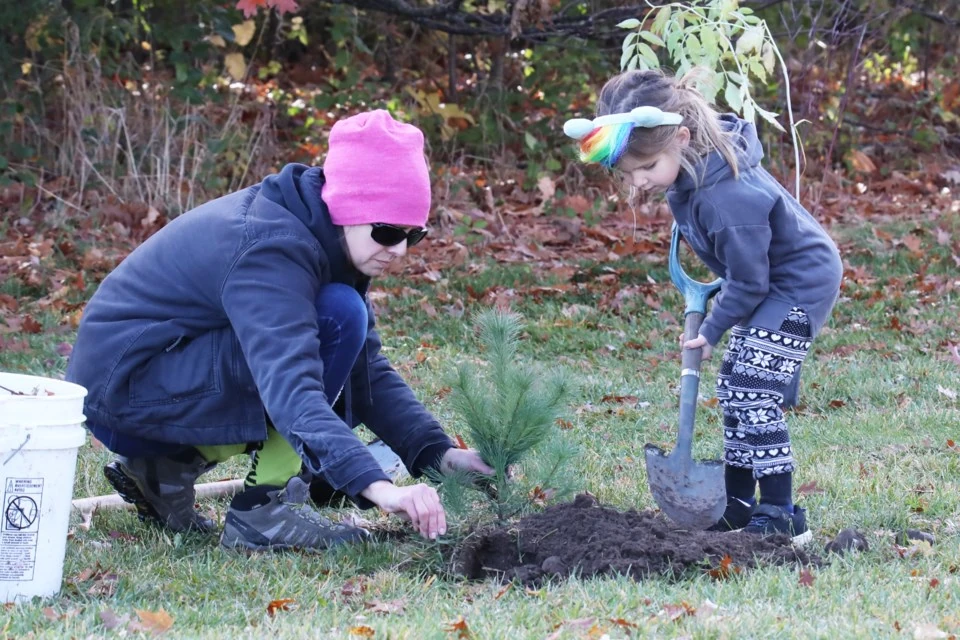
Why Tree Planting Matters
Tree planting is more than just a simple act of putting a seedling into the ground; it represents a crucial step in addressing some of the world’s most pressing environmental challenges. Trees play an essential role in absorbing carbon dioxide, improving air quality, conserving water, preserving biodiversity, and combating climate change. As urbanization increases and natural habitats are threatened, tree planting initiatives help restore ecosystems, mitigate the effects of deforestation, and create greener, healthier communities.
Beyond environmental benefits, trees offer social and economic advantages. Green spaces contribute to better mental health, provide recreational areas, and can even increase property values. In many regions, tree planting efforts can also foster community collaboration and environmental stewardship, empowering individuals to actively engage in sustainability initiatives.
Setting Your Vision and Goals
Before launching your tree planting initiative, it’s essential to establish a clear vision and set measurable goals. Defining the scope and purpose of your initiative will guide every step of the process, from planning and fundraising to implementation and maintenance. A well-thought-out vision provides focus and helps engage stakeholders, volunteers, and potential donors.
Defining the Scope of Your Initiative
Start by outlining the specific objectives of your tree planting effort. Are you aiming to restore a degraded area, create urban green spaces, combat climate change, or promote environmental awareness? Consider the following questions to help refine your scope:
- Location: Will the project focus on urban areas, rural landscapes, or a mix of both?
- Scale: How many trees do you plan to plant, and over what time period? Will this be a one-time event or an ongoing initiative?
- Focus: Is the project primarily environmental, educational, or community-driven? Will it target specific goals like wildlife habitat restoration, erosion control, or carbon offsetting?
Having a well-defined scope allows you to align your resources, attract the right partners, and set realistic expectations for your initiative.
Short-term vs. Long-term Goals
Once you’ve established your vision, break it down into short-term and long-term goals to track progress and maintain momentum.
- Short-term goals might include:
- Identifying suitable tree species for your region
- Securing funding or partnerships
- Recruiting a volunteer base or engaging local schools and organizations
- Organizing the first tree planting event
Short-term goals help you get started quickly and demonstrate early success, which can build credibility and attract further support.
- Long-term goals should focus on sustaining the initiative and ensuring its long-lasting impact. These might include:
- Monitoring and maintaining the health of planted trees over the years
- Expanding to new areas or increasing the number of trees planted annually
- Building long-term community engagement through education, workshops, or collaborations with local governments
- Ensuring the project’s environmental and social benefits are continuously realized
By setting clear, achievable goals in both the short and long term, you can effectively manage your initiative and ensure it grows sustainably, contributing to a lasting environmental legacy.
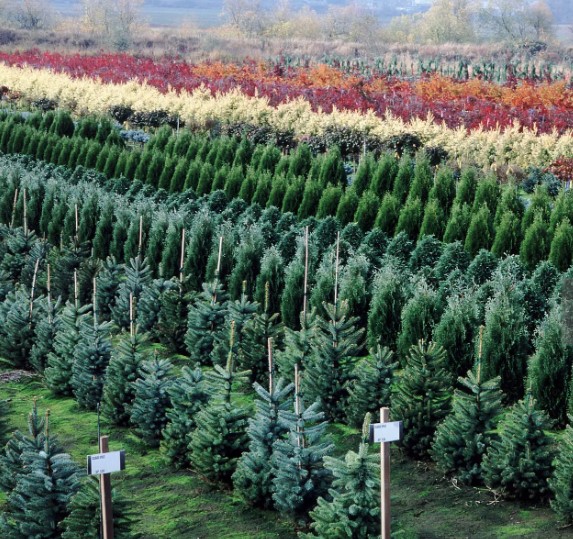
Research and Planning
The success of your tree planting initiative hinges on thorough research and careful planning. A deep understanding of the environmental factors in your area, from the types of trees to plant to the legal considerations involved, is essential for ensuring your trees not only survive but thrive. This section outlines the key areas you need to explore before starting your initiative, helping you to lay a strong foundation for long-term success.
Selecting Suitable Tree Species for Your Region
Choosing the right species of trees is crucial to the sustainability of your initiative. Each tree species has specific requirements for growth, and not all trees will be suitable for your local environment. Consider the following factors when selecting species:
- Native vs. Non-native Species: Native trees are generally better suited to local soil and climate conditions, require less maintenance, and support local wildlife. Non-native or invasive species, on the other hand, may disrupt local ecosystems.
- Resilience to Local Conditions: Look for species that can thrive in your region’s climate. For instance, if your area is prone to drought, consider drought-resistant species. If planting in urban areas, choose species that can tolerate pollution and compacted soil.
- Growth and Size: Make sure the species you choose will fit the available space. Trees that grow too large for their surroundings can cause issues with infrastructure or crowd out other plant life.
Consult local forestry departments, botanical experts, or environmental organizations for guidance on the best species to plant in your specific region.
Understanding Soil, Climate, and Biodiversity Needs
To maximize the chances of your trees’ survival, it’s important to understand the environmental conditions in your planting area.
- Soil Type and Quality: Different tree species require different soil types. Conduct a soil test to determine pH levels, nutrients, and texture, and choose species that match those conditions.
- Climate and Weather Patterns: Assess the seasonal climate, including average rainfall, temperature ranges, and the likelihood of extreme weather events like floods or frosts. These factors will influence the trees’ ability to survive and grow.
- Ecosystem and Biodiversity: Consider the surrounding ecosystem. Planting trees that complement existing flora and fauna can help create a balanced and thriving environment. Avoid introducing species that could upset the local biodiversity or outcompete native plants.
By carefully matching your tree selection and planting plans to the local environment, you increase the likelihood of long-term success and sustainability.
Legal Considerations and Permits
Tree planting often involves legal regulations and administrative requirements, especially if you’re working in public spaces or protected areas. Be sure to research and obtain any necessary permits before moving forward with your project. Here are some key legal factors to consider:
- Permits for Public Lands: If you’re planting in parks, nature reserves, or other public areas, you may need permission from local authorities. Contact municipal, state, or federal agencies to ensure compliance with local laws.
- Zoning and Property Laws: If planting on private land, confirm property boundaries and zoning regulations. Ensure you have the landowner’s permission and check that the project does not violate local ordinances.
- Environmental Protection Laws: Some areas may be subject to environmental protection laws, such as restrictions on planting near water bodies or in wildlife habitats. Be aware of conservation efforts in your region to avoid any legal conflicts.
- Liability and Insurance: If you’re organizing large tree planting events involving volunteers, consider liability insurance to protect against potential accidents or property damage.
By addressing these legal considerations early in your planning, you can avoid potential setbacks and ensure that your initiative proceeds smoothly and within the bounds of local regulations.
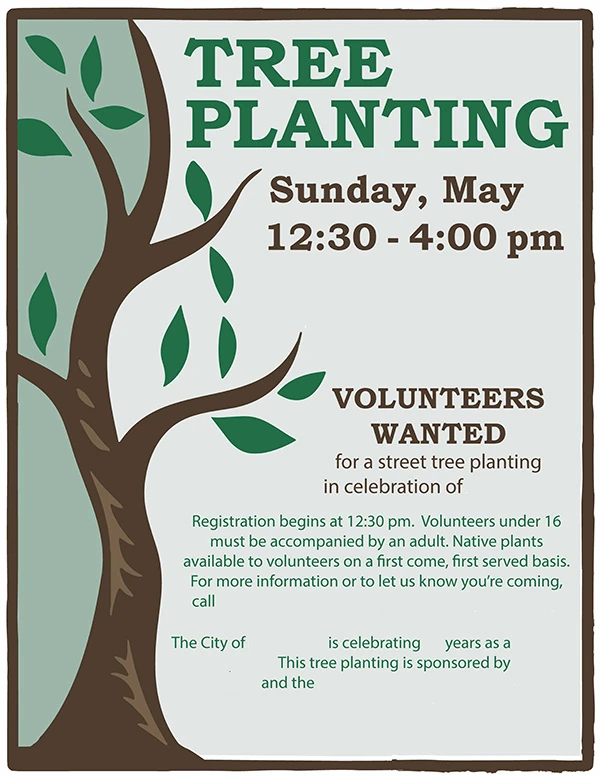
Funding Your Initiative
Securing funding is a critical component of launching a successful tree planting initiative. Whether your project is large or small, the financial resources you gather will support the purchase of seedlings, tools, and materials, and cover operational costs like event organization and long-term tree care. This section explores various funding avenues to help you get started, from applying for grants to engaging the community in fundraising efforts and forming strategic partnerships with local organizations.
Applying for Grants and Sponsorships
Grants and sponsorships are some of the most effective ways to fund tree planting initiatives, especially if you are aligned with environmental, conservation, or community development goals. Many governments, NGOs, and corporations offer grants dedicated to sustainability projects, and sponsorships from businesses can provide significant financial backing.
- Researching Available Grants: Look for environmental grants from local, state, or national governments, as well as foundations and non-profits that support conservation work. Some grants may specifically target reforestation efforts, urban greening, or educational environmental programs. Be sure to thoroughly review eligibility requirements, deadlines, and application processes.
- Preparing a Strong Application: A successful grant proposal clearly outlines your project’s goals, the impact it will have, and how the funding will be used. Highlight how your initiative aligns with the funder’s mission, include a detailed budget, and emphasize the community and environmental benefits. Providing measurable outcomes, such as the number of trees to be planted and projected environmental impact, can strengthen your case.
- Corporate Sponsorships: Reach out to local or national companies that prioritize sustainability in their corporate social responsibility (CSR) efforts. Businesses may be willing to provide financial support in exchange for public recognition or opportunities to involve their employees in volunteer activities. Be prepared to pitch your project professionally, showing how sponsorship can benefit the company’s brand and community standing.
Community Fundraising Strategies
Involving the community in your fundraising efforts not only generates financial support but also helps build a sense of shared ownership and commitment to the initiative. There are several ways to engage the community to raise funds for your project:
- Crowdfunding Campaigns: Launch an online crowdfunding campaign through platforms like GoFundMe, Kickstarter, or specialized environmental platforms such as One Tree Planted. Share compelling stories, photos, and videos about your initiative to encourage donations. Use social media and email marketing to promote the campaign and reach a broad audience.
- Organize Fundraising Events: Host local events such as tree planting days, nature walks, bake sales, or charity auctions. These events not only raise money but also create awareness about your initiative and provide an opportunity for community members to get involved directly.
- Tree Sponsorship Programs: Create a sponsorship program where individuals or businesses can “sponsor” a tree by donating a specific amount. Offer recognition, such as naming a tree or placing plaques, to encourage participation. This personal connection can motivate more donations and help people feel directly invested in the project’s success.
Partnering with Local Businesses or NGOs
Building partnerships with local businesses and non-governmental organizations (NGOs) can provide financial support, expertise, and resources for your tree planting initiative. Partnerships offer mutual benefits and can increase the visibility and reach of your project.
- Local Businesses: Engage businesses that may have a vested interest in environmental sustainability or corporate social responsibility. Restaurants, nurseries, or construction companies, for example, might provide in-kind donations such as food for events, tools, or tree seedlings, reducing your overall costs. You could also create joint marketing campaigns where the business promotes your project while showcasing their contribution to environmental causes.
- NGOs and Environmental Groups: Collaborating with established environmental organizations can unlock new resources and expertise. They may offer funding, logistical support, or access to volunteers and networks. NGOs with reforestation, conservation, or education missions are ideal partners for tree planting initiatives.
- Educational Institutions: Partner with schools and universities to incorporate tree planting into environmental education programs. Schools can organize tree planting days with students and raise funds through parent and community networks.
By diversifying your funding sources and building partnerships, you’ll ensure a strong financial foundation for your tree planting initiative while fostering long-term support from your community and stakeholders.
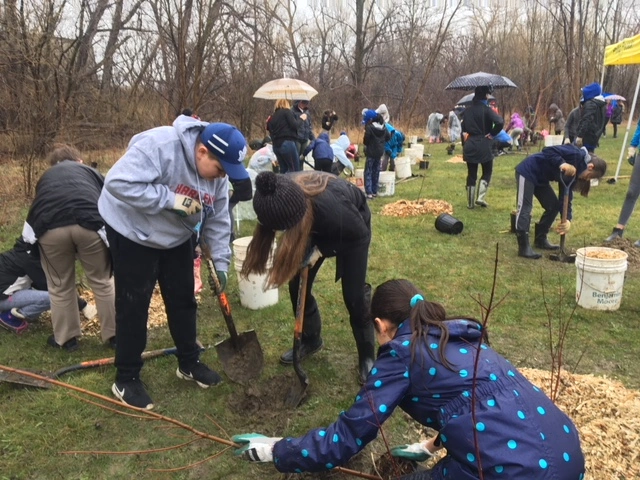
Engaging Volunteers and the Community
A successful tree planting initiative thrives on community involvement. Volunteers not only provide essential manpower but also help spread awareness and inspire a sense of shared responsibility for the environment. Building a strong network of volunteers and actively engaging the community can transform your initiative into a collaborative, long-term effort. This section will guide you through recruiting and managing volunteers, organizing events, and raising awareness through educational outreach.
Recruiting and Managing Volunteers
Volunteers are the backbone of any community-based tree planting initiative. To attract and retain committed volunteers, you need to create a welcoming, organized, and meaningful experience for them.
- Targeting the Right Audiences: Identify groups or individuals likely to be interested in your cause, such as local environmental groups, schools, nature clubs, or corporate employees looking for team-building opportunities. Use social media, community boards, and local events to spread the word about your initiative.
- Clear Roles and Responsibilities: When recruiting volunteers, clearly define the tasks they will be responsible for, such as planting trees, preparing the site, or helping with event logistics. Offering a range of roles, from hands-on planting to administrative tasks like fundraising or social media management, can appeal to a broader audience.
- Training and Orientation: Provide training to ensure volunteers understand proper tree planting techniques, the environmental importance of the initiative, and safety guidelines. Offering workshops or brief orientations before events will prepare volunteers for the day’s activities and boost their confidence.
- Recognition and Retention: Show appreciation for your volunteers by recognizing their efforts. Simple gestures like providing refreshments, certificates, or public recognition on social media can help maintain enthusiasm. Keep volunteers engaged by regularly updating them on the progress and impact of the initiative, encouraging long-term involvement.
Organizing Tree Planting Events
Well-organized tree planting events are a great way to bring the community together while making tangible progress toward your initiative’s goals. Effective event planning will ensure a smooth and enjoyable experience for everyone involved.
- Choosing a Date and Location: Select a time of year that is suitable for planting in your region—typically in spring or fall, when the weather is milder, and the chances of tree survival are higher. Choose an accessible location where the community can easily participate, whether in a local park, schoolyard, or a degraded area that needs reforestation.
- Event Logistics: Prepare the site in advance by clearing debris, marking planting spots, and ensuring you have the necessary tools, such as shovels, gloves, and watering equipment. Make sure there are enough volunteers to supervise and guide participants, especially if you’re expecting large crowds.
- Promoting the Event: Use multiple channels to promote your tree planting event, including social media, local news outlets, community boards, and word-of-mouth. Partner with local influencers or community leaders to increase visibility. Be clear about event details, including time, location, what to bring, and how to sign up.
Educational Outreach and Raising Awareness
Beyond the physical act of planting trees, your initiative should focus on educating the community about the importance of environmental stewardship and sustainable practices. Engaging people in learning about trees, ecosystems, and climate change will foster a deeper connection to your cause.
- Workshops and Presentations: Offer workshops or presentations to schools, community groups, or local organizations to raise awareness about the environmental benefits of trees and the role they play in combating climate change. Involving experts, such as arborists or ecologists, can provide valuable insights.
- Educational Materials: Develop simple, easy-to-understand materials such as brochures, infographics, or social media content that highlight key environmental topics like reforestation, biodiversity, and tree care. Distribute these materials during events or through community channels to reach a wider audience.
- Youth Engagement Programs: Partner with schools to create programs that involve students in tree planting and environmental education. Children and teenagers can become passionate advocates for the environment, and engaging them early can have long-term benefits for your initiative. Organize tree planting activities during Earth Day, Arbor Day, or other environmental observances to increase participation.
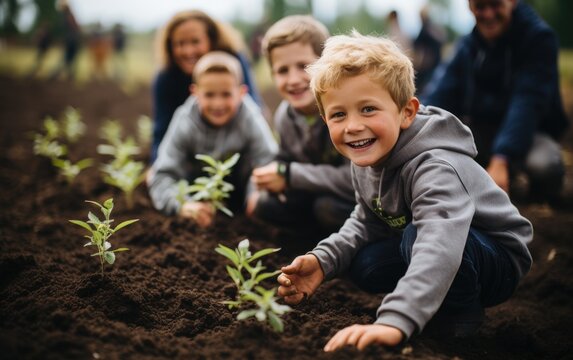
By actively involving the community and educating people about the value of trees and sustainable practices, you’ll build a strong support base for your tree planting initiative. Empowering individuals with knowledge and hands-on experience can foster lasting environmental consciousness and encourage continued participation.
Logistics and Tree Planting Techniques
The logistics of your tree planting initiative, from preparing the land to ensuring long-term tree care, are critical to its success. Proper planning and planting techniques will not only help the trees thrive but also ensure that your efforts yield sustainable, lasting results. This section outlines the essential steps for preparing the land, planting trees correctly, and maintaining their health in the years following the planting event. Additionally, we’ll explore how to monitor and evaluate the success of your initiative over time.
Preparing the Land and Planting Guidelines
Before you begin planting, it’s important to prepare the site to ensure the soil is ready to support healthy tree growth. Proper preparation will increase the chances of survival for your newly planted trees.
- Site Assessment: Start by conducting a thorough assessment of the site. Check for any obstacles such as rocks, debris, or invasive plants that might hinder tree growth. Evaluate the soil quality, drainage, and sunlight exposure to ensure it is suitable for the species you plan to plant.
- Land Preparation: Clear the land of debris and unwanted vegetation, particularly weeds or invasive species that might compete with the new trees for nutrients and water. If needed, improve the soil quality by adding organic compost or mulch to enhance nutrient content and moisture retention.
- Planting Guidelines:
- Digging the Right Hole: Ensure the hole is twice as wide as the root ball and deep enough so that the tree’s roots can spread freely. The top of the root ball should be level with or slightly above the surrounding ground.
- Positioning the Tree: Place the tree in the hole carefully, making sure that it stands upright and that the roots are evenly spread out. Avoid planting the tree too deep, as this can suffocate the roots.
- Filling and Watering: Refill the hole with the original soil, gently tamping it down to eliminate air pockets. Water the tree immediately after planting to help settle the soil and provide moisture to the roots. Apply mulch around the base of the tree, leaving space around the trunk to prevent rot.
Post-planting Care and Maintenance
The care your trees receive in the months and years following planting is crucial to their survival and long-term health. Without proper maintenance, even well-planted trees may struggle to thrive.
- Watering: Newly planted trees need consistent watering, especially during the first two years while their root systems establish. Water deeply and regularly, particularly during dry periods. However, avoid overwatering, as this can cause root rot. A good rule of thumb is to water once a week unless there is sufficient rainfall.
- Mulching: Mulch helps retain soil moisture, regulate temperature, and suppress weed growth. Add a layer of organic mulch around the base of the tree, but leave a gap around the trunk to prevent mold or rot from developing.
- Pruning and Protection: Light pruning may be necessary to remove damaged or diseased branches, encourage healthy growth, and shape the tree. Be careful not to over-prune young trees. Protect the trees from wildlife or pests by installing tree guards or fencing, especially in areas where animals may chew on the bark or leaves.
Monitoring and Evaluating Success
Ongoing monitoring and evaluation of your trees are vital for ensuring that your initiative remains successful over time. It allows you to assess tree health, address any issues, and document the impact of your work.
- Regular Monitoring: Create a schedule for regular check-ups, particularly during the first few years after planting. Observe the growth of each tree, checking for signs of stress, disease, or pest infestations. Keep records of tree health and growth progress to identify any emerging trends or problems.
- Tree Health Indicators: Monitor indicators such as leaf color and condition, bark health, and the presence of pests or fungal infections. Healthy trees should display vibrant foliage, strong bark, and a lack of visible damage or disease.
- Success Metrics: Evaluate the success of your initiative by tracking key metrics like survival rates, tree growth, and biodiversity improvements. How many trees survived and are thriving? Are you seeing increased wildlife activity in the area? Is the community continuing to engage with the project? These metrics can help you determine the effectiveness of your efforts and make improvements for future plantings.
- Long-term Sustainability: Ensure your initiative remains sustainable by planning for the long-term care of the trees. This may involve delegating ongoing maintenance tasks to volunteers, partnering with local government or organizations, or creating a community-based tree monitoring program.
By focusing on proper planting techniques, diligent post-planting care, and consistent monitoring, you’ll ensure that the trees you plant flourish and make a lasting impact on the environment and community. The long-term success of your tree planting initiative will depend on how well the trees are nurtured after the initial planting event, so careful planning is key.
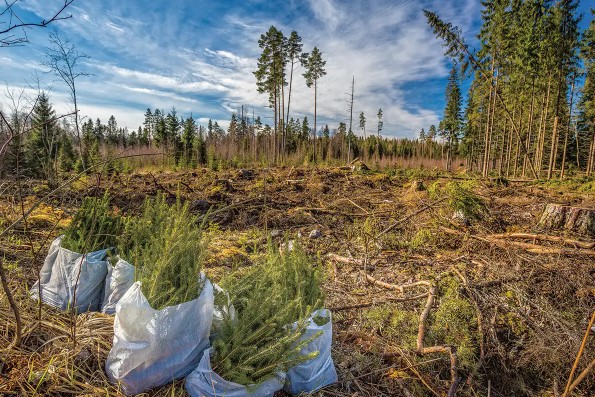
Sustainability and Long-Term Impact
For your tree planting initiative to have a lasting positive effect, sustainability and long-term care are essential. While the initial planting is important, the real success of the project lies in the continued growth, health, and ecological impact of the trees over time. A sustainable initiative ensures that trees receive proper maintenance, fosters community ownership, and aligns with broader environmental and urban planning strategies. This section explores how to create a long-term maintenance plan, collaborate with local governments and organizations, and ensure ongoing community involvement to maximize the impact of your initiative.
Creating a Maintenance Plan
A well-structured maintenance plan is crucial for the long-term health of the trees. Without consistent care, newly planted trees are vulnerable to pests, disease, and environmental stress. A comprehensive maintenance plan should outline the roles, responsibilities, and actions required for continued tree care.
- Scheduled Tree Care: Include detailed schedules for watering, pruning, mulching, and fertilization, especially during the first few years of a tree’s life. Regular watering is critical for root establishment, and pruning encourages healthy growth. Mulching helps to maintain soil moisture and reduce weed competition.
- Assigning Responsibilities: Identify who will be responsible for each aspect of tree maintenance—whether volunteers, local organizations, or hired professionals. Consider rotating roles or establishing a “tree care committee” to ensure that responsibilities are shared and long-term care is prioritized.
- Budget for Long-Term Care: Secure funding for ongoing maintenance, especially if your initiative spans several years. Budget for essentials such as tools, mulch, pest control, and any professional services that may be needed for larger projects. Seeking long-term sponsorships or creating partnerships with local businesses can help cover costs.
- Monitoring and Reporting: Set up regular monitoring to assess tree health, record growth rates, and identify any emerging issues. Establish a system for reporting back to key stakeholders, including the community, donors, and partners. This helps maintain accountability and keeps everyone engaged.
Collaborating with Local Governments or Organizations
Local governments and environmental organizations are key allies in ensuring the sustainability of your tree planting initiative. Partnering with them can provide additional resources, policy support, and long-term integration of your project into broader urban or regional planning.
- Policy Support and Advocacy: Collaborate with local governments to integrate your tree planting initiative into municipal sustainability plans or green space development efforts. Cities and towns often have urban forestry programs or environmental departments that can provide technical assistance, funding, or policy support to enhance your project’s reach and longevity.
- Partnering with Environmental Organizations: NGOs and environmental groups can offer expertise, manpower, and resources for long-term sustainability. Partnering with established organizations can also give your initiative credibility and access to wider networks of volunteers, funding opportunities, and technical knowledge.
- Leveraging Local Expertise: Local universities, botanical gardens, and research institutions can provide valuable insights into species selection, environmental impact assessments, and long-term ecological monitoring. They may also be able to contribute to public education and awareness campaigns tied to your initiative.
Ensuring Community Involvement for Long-Term Care
The most sustainable tree planting initiatives are those that empower the local community to take an active role in long-term care. Fostering a sense of ownership among residents increases the likelihood that the trees will be maintained, and it creates lasting environmental stewardship.
- Community Ownership: Encourage local residents to “adopt” trees, taking personal responsibility for their care. Creating an adoption program where community members commit to watering, mulching, and monitoring specific trees can enhance local engagement and provide trees with the care they need.
- Educational Outreach and Ongoing Engagement: Continue educating the community about the importance of trees and the environmental benefits they provide. Offer workshops on tree care, host annual tree planting events, and provide regular updates on the initiative’s impact. Engaging schools and youth organizations is especially important, as children can become lifelong environmental advocates.
- Long-Term Volunteer Networks: Establish a long-term volunteer program that extends beyond the initial planting phase. Regular events, such as tree care days, pruning workshops, and monitoring walks, can keep volunteers involved. Consider creating a local tree care group or “green team” that provides ongoing support for tree maintenance efforts.
- Cultural and Social Integration: Incorporating the initiative into local cultural or social events, such as festivals or Earth Day celebrations, can help reinforce the importance of tree planting and care. Tying your initiative to the community’s identity will help sustain enthusiasm and involvement over time.
By creating a robust maintenance plan, building partnerships with local governments and organizations, and fostering deep community involvement, you can ensure the long-term success of your tree planting initiative. Sustainability is not just about planting trees; it’s about ensuring that they grow, thrive, and continue to benefit the environment and the community for generations to come.

Conclusion: Growing a Greener Future
A tree planting initiative is more than just an environmental project—it’s a commitment to creating a sustainable, thriving ecosystem that benefits both nature and the community. As your trees take root and grow, they serve as a living symbol of environmental responsibility and community collaboration. In this final section, we reflect on the impact of your initiative and consider how you can inspire others to replicate and expand these efforts, ultimately contributing to a greener and more sustainable future for all.
Reflecting on Your Initiative’s Impact
The journey of planting trees and nurturing them to maturity is a long-term investment in the well-being of the environment, wildlife, and future generations. Reflecting on your initiative’s progress and impact can provide valuable insights into what has been achieved and the difference it has made.
- Environmental Benefits: Consider the positive effects your initiative has had on the local ecosystem. Trees improve air quality, enhance biodiversity, and mitigate the effects of climate change by absorbing carbon dioxide. If you’ve planted in urban areas, your efforts may have contributed to reducing the urban heat island effect, improving stormwater management, or creating green spaces for the community to enjoy.
- Community Engagement: Reflect on how your initiative has brought people together. Whether it’s through volunteer work, educational programs, or events, tree planting initiatives often inspire collaboration, strengthen community bonds, and create a shared sense of purpose. Highlight stories of personal involvement or community transformation that illustrate the social impact of your project.
- Long-term Legacy: The trees you’ve planted today will continue to grow and provide benefits for decades, if not centuries, to come. As they mature, their value increases, offering shade, habitat for wildlife, and protection against soil erosion. Your initiative’s legacy is not just in the trees themselves but in the community’s ongoing commitment to protecting the environment.
Encouraging Others to Replicate and Expand
One of the most powerful ways to grow your impact is by encouraging others to start their own tree planting initiatives or contribute to expanding your efforts. By sharing the lessons you’ve learned, the strategies that worked, and the challenges you overcame, you can inspire a ripple effect that spreads far beyond your immediate project.
- Sharing Success Stories: Use your platform—whether through social media, community presentations, or publications—to share the success and impact of your initiative. Highlight the tangible outcomes, the volunteers involved, and the partnerships that made it possible. A compelling narrative can inspire others to take action in their own communities.
- Providing Resources and Tools: Offer guides, resources, or workshops to help other individuals, schools, or organizations start similar initiatives. Provide templates for project planning, lists of funding sources, and tips for engaging volunteers. You can also consider creating an online community or forum where people can share their experiences and advice on tree planting efforts.
- Advocating for Replication and Growth: Engage with local governments, NGOs, or businesses to advocate for larger-scale reforestation projects or urban greening initiatives. Offer your project as a model for sustainable environmental action and suggest ways it could be replicated on a regional or national scale. Partner with other environmental organizations to amplify the reach of your message.
Inspiring a Greener Future
Your tree planting initiative is not only about addressing today’s environmental challenges; it’s about inspiring long-term, sustainable change. As your trees grow, so too will the awareness and action surrounding environmental stewardship in your community. By encouraging others to take part, you’re helping to foster a movement that plants the seeds—both literally and figuratively—of a greener, healthier future for everyone.
In the end, your initiative is just one part of a much larger, global effort to restore ecosystems, combat climate change, and create thriving communities. Every tree planted is a step toward a more resilient planet, and by inspiring others to join you, you can multiply the impact of your work and help grow a greener world for generations to come.

